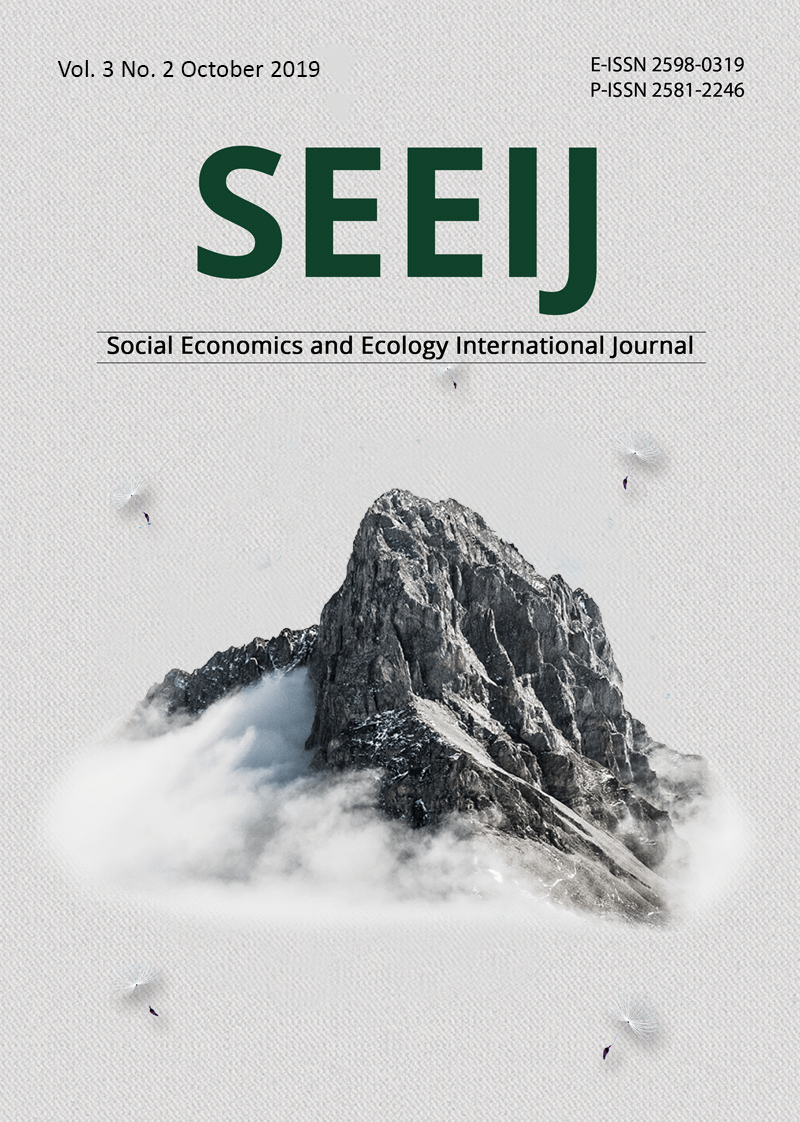Green Information Technology Readiness Model Using Factor Analysis Method In Indonesia
DOI:
https://doi.org/10.21512/seeij.v3i2.6216Abstract
Green information technology has been increasingly becoming a strategic consideration for developing sustainable business practices through balancing economic and environmental performance of an organization. To help individual organizations better pursue green information technology, this paper presents a factor analysis based decision model for evaluating the green information technology readiness of an organization. The decision model effectively considers the multi-dimensional nature of the evaluation problem and appropriately handle the subjectivity and imprecision of the human evaluation process. An example is given for demonstrating the applicability of the model for evaluating the green information technology readiness of organization. Green information technology readiness is considered to be an organization’s capability to embed sustainability in the beliefs and attitudes in the development, deployment and disposal of information technology technical assets and in their information technology processes, practices and policies and in the governance systems to ensure compliance with internal and external sustainability expectations.References
Alexandra Klimova, Eric Rondeau, Karl Andersson, Jari Porras, Andrei Rybin, Arkady Zaslavsky. (2016). An international Master's program in green IT as a contribution to sustainable development. Journal of Cleaner Production. Elsevier.
Cesar Bandera, Regina Collins, Katia Passeri ni. (2018). Risky business: Experiential learn ing, in formation and communications techno logy, and risk-taking attitudes in entrepreneur ship education. International Journal of Management Education. Elsevier.
Harijanti, S.D. (2015). ‘The changing paradigm on governance: the case of Indonesia’, Int.J. Public Law and Policy, Vol. 5, No. 1, pp.77–91.
Hwang, T. and Kim, S.T. (2013). ‘The mode rating effects of eco-ori ented organisational culture on the green practice-performance relati onship’, Int. J. Services Sciences, Vol. 5, No. 1, pp.74–94.
Kumar, M., Raman, J.and Priya. (2016). ‘The effects of green policy on the performance of green supply chains’, Int. J. Integrated Supply Management, Vol.10, No.1, p.1–37.
Makarechi, S. and Yerushalmi, L. (2010). ‘Shades of green technologi es:id entification of significant para meters affecting the Performance of green technologies in buildings’, Int. J. Environmental Policy and De cision Making,Vol.1,No.1,p.64–76.
Shahla, Ab Razak CheHussin, Halina MohamedDahlan. (2017). Organizational rese arch in the field of Green IT: A systematic literature review from 2007 to 2016. Telematics and Informatics. Vol. 34, Issue 7, November 2017, Pages 1191-1249. Elsevier.
Downloads
Published
How to Cite
Issue
Section
License
Copyright (c) 2020 Wahyu Sardjono, Widhilaga Gia Perdana

This work is licensed under a Creative Commons Attribution-NonCommercial 4.0 International License.
The Authors submitting a manuscript do so on the understanding that if accepted for publication, copyright of the article shall be assigned to SEEIJ Community Development Academic (CDA) Bina Nusantara University as publisher of the journal.
Copyright encompasses exclusive rights to reproduce and deliver the article in all form and media, including reprints, photographs, microfilms and any other similar reproductions, as well as translations. The reproduction of any part of this journal, its storage in databases and its transmission by any form or media, such as electronic, electrostatic and mechanical copies, photocopies, recordings, magnetic media, etc., will be allowed only with a written permission from SEEIJ Community Development Academic (CDA) Bina Nusantara University.
SEEIJ Community Development Academic (CDA) Bina Nusantara University, the Editors and the reviewer make every effort to ensure that no wrong or misleading data, opinions or statements be published in the journal. In any way, the contents of the articles and advertisements published in the SEEIJ are sole and exclusive responsibility of their respective authors and advertisers.

This work is licensed under a Creative Commons Attribution-NonCommercial 4.0 International License.









